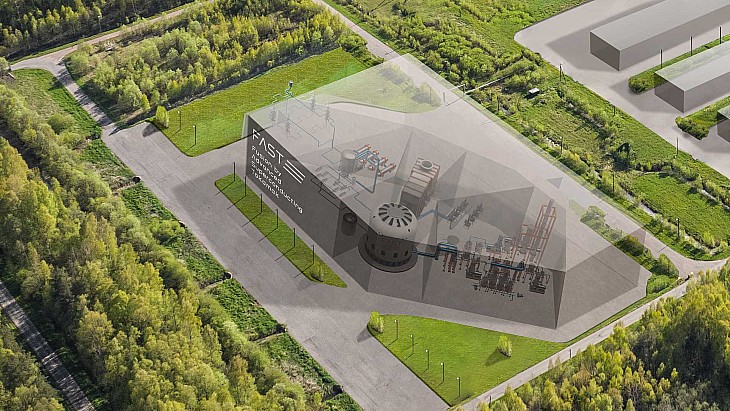The Metsamor plant comprises two Russian-built 376 MWe VVER reactors which started operating in 1976 and 1980, respectively. Both units were taken offline in 1988 due to safety concerns regarding seismic vulnerability, although they both continued to operate and had not sustained any damage in a major earthquake in the region earlier that year. Unit 2 was restarted in 1995, and is subject to ongoing safety improvements. Unit 1 is now being decommissioned.
Last month, the Armenian Nuclear Regulatory Authority (ANRA) issued a permit to operator Closed Joint Stock Company (CJSC) to continue operating unit 2 until September 2026. This is beyond the originally granted licence, which is until the end of 2021.
The extension was granted based on a request by CJSC, which completed an extensive modernisation and safety improvement programme this year, including: heat treatment of the reactor pressure vessel to recover material strength; replacement of a large number of components of emergency systems; modernisation of emergency systems and the control and monitoring systems; and replacement of safety related cables.
A SALTO peer review is a comprehensive safety review addressing strategy and key elements for the safe long-term operation (LTO) of nuclear power plants. SALTO missions complement IAEA Operational Safety Review Team (OSART) missions which are designed as a review of programmes and activities essential to operational safety. SALTO peer reviews can be carried out at any time during the lifetime of a nuclear power plant, although according to the IAEA the most suitable time lies within the last ten years of the plant's originally foreseen operating period. SALTO and OSART reviews are carried out at the request of the IAEA member country in which the review is to take place.
The latest SALTO mission to the Armenian Nuclear Power Plant (ANPP) followed up on the suggestions by the previous SALTO reviews in 2013, 2016, and 2018.
The review mission - carried at the request of Armenia - was conducted 26-29 October by a team comprising three experts from the Czech Republic, Romania and Slovakia, and one IAEA staff member.
The team concluded the plant had: developed a proactive approach to prepare for LTO; improved and updated its Safety Analysis Report to support LTO; and improved the methodology for defining the scope of components designated for ageing management.
The team noted that further work is necessary by the plant to: implement the first periodic safety review in line with the IAEA safety standards; confirm resistance of electrical components to harsh conditions, so called 'qualification'; and complete the comprehensive ageing management review.
"The team observed that the ANPP improved preparedness for safe LTO," said Gabor Petofi, SALTO team leader and IAEA senior nuclear safety officer. "Using the 2018 SALTO recommendations, the plant made significant improvements in ageing management. The team encourages the plant management to address the remaining findings from the 2018 mission and implement all activities for a safe LTO."
The team provided a draft report to the plant management and ANRA at the end of the mission. A final report will be submitted to the plant management, ANRA and the Armenian government within three months.
"With the support of the IAEA, we can further improve our preparedness for safe LTO and implement ageing management effectively," said ANPP Chief Engineer Artur Grigoryan. "The results of this follow-up mission indicate for us the remaining tasks to fully align our arrangements for LTO with the IAEA safety standards."

.jpg)



_82983.jpg)
_34792.jpg)
_16403_79272.jpg)


_76087_55556.jpg)



